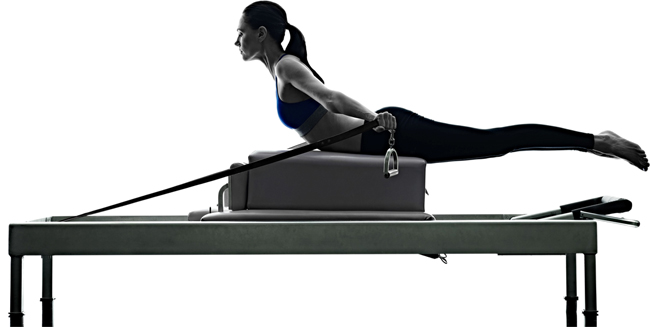THE FUSION OF PILATES WITH THE SCIENCE OF PHYSIOTHERAPY

How We Combine Physiotherapy And Pilates At Our Downtown Toronto Location:
The Science Of Physiotherapy:
The research for treating a lot of common injures is changing all the time. As Physiotherapists it is important to keep up to date on this so that our treatments are more effective. However the science has to be applied to each individual case and this is where experience and intuition come in. Not everyone responds the same way to a proven treatment. We use the research to guide us to best practice, but we keep an open mind to what works for you. We let your body guide the treatment.
Pilates Rehabilitation
Pilates originated as a rehabilitation technique by Joseph Pilates in New York City. The equipment is unique to Pilates and allows progressive resistance and support for injuries. We use the Reformer, Cadillac, Stability Chair and Barrels in the clinic. The equipment allows us to develop normal movement patterns and strength. It also gives us numerous choices when you have pain, so that we don’t aggravate a healing injury or over-load it. Pilates-based rehabilitation is so adaptable that it allows us to work with any spinal or peripheral joint condition/injury. The equipment is designed to work with the most acute and painful conditions up to higher level sports drills.
Treating Pain
Most clients come to physiotherapy because they are in pain. Pain can be a complex experience with many factors influencing the intensity and duration. In your assessment we will investigate what movements are causing your pain. Lifestyle and cognitive factors may also be sensitizing the pain. The pain drivers vary from a minor joint sprain to something more persistent like chronic lower back pain. Pain is not always about tissue damage. Sometimes the area has become over-sensitive to pain.
Strengthening
Many injures do well with strengthening the area so the tissues are more robust for the activity. Sometimes pain is a result of tissue over-load. In our physiotherapy assessment we assess why this is happening and then develop more muscle balance. We focus on normal movement and pain before strengthening so the body can adapt. When the area is less sensitive we can increase resistance. The Pilates equipment provides graded resistance using springs with your own body weight. The Equipment allows us to work on functional strengthening for your normal activities or sport.
Movement Control
Most of the time the pain and movement problem will be resolved by establishing normal movement around the joint. We know what the normal biomechanics should be and we determine which ones are not operating correctly. Normal movement of a joint will allow the muscles to work in balance. Then we can start building up the strength. The Pilates equipment allows us to slow movement down to develop the right motor control patterns. The painful joints are loaded with progressive resistance as pain resolves. This approach applies to lower backs and necks as well as the joints in your arms and legs.
Return To Your Activities And Sports

Once you have the foundation of pain-free movement and strength, we can progress to sport and activity-specific skills. Being able to reach into the dishwasher, bending your spine can be a functional goal. Sport specific movements for shoulders and knees can be performed using the equipment. Tweaking your training schedule and intensity is important. Increasing intensity and duration for jumping or running will build tolerance again. The Pilates equipment allows us to perform jumping and running movements which are ideal for knee and and ankle injuries. Shoulder and elbow injuries can be progressed into sport specific movement patterns.
